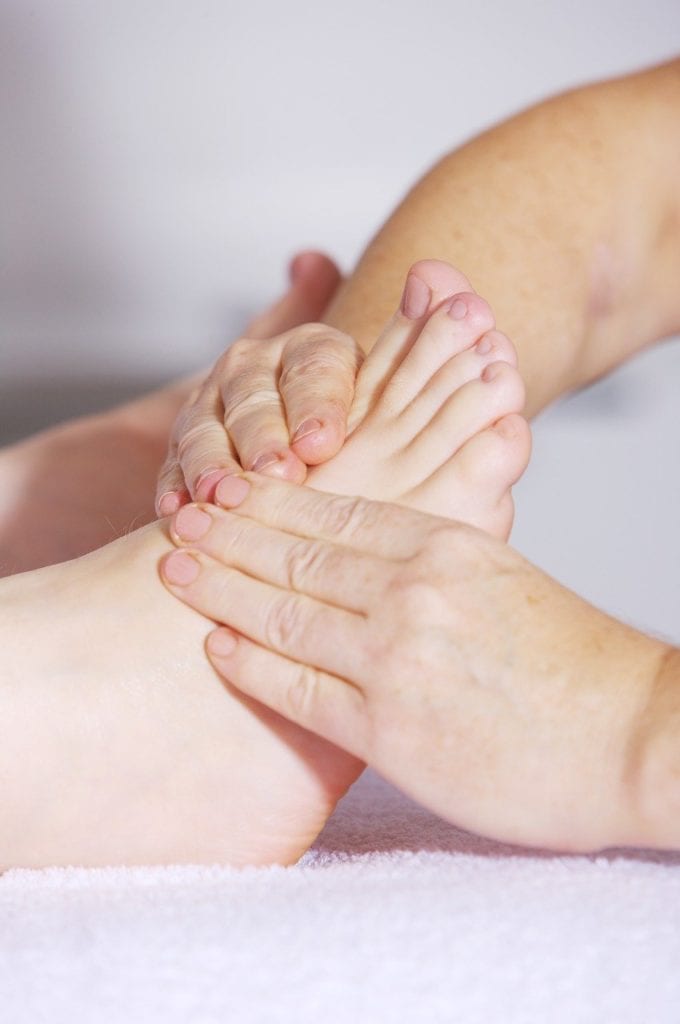Ankle & Foot
A Word on Ankle and Foot Pain
The Bad News
- Ankle sprains have been estimated to make up 30% of injuries seen at sports medicine clinics and are the most frequently seen musculoskeletal injury at primary care providers (Mahaffey D, et al 1999).
- Recurrent ankle sprains are very common, especially the 1st year after initial injury, resulting in chronic instability.
- 24% of people experience frequent foot pain, with women being affected more often than men.
- According to the Bureau of Labor Statistics, there are more than 53,000 foot injuries per year causing missed work days. This means that on average, 4.8 individuals per 10,000 full-time workers are missing work due to foot injuries.
The Good News
- Physical therapy including joint mobilizations, soft tissue work, balance training, walking assessment, and specific exercise training can promote optimal healing after an injury or with chronic.
- If surgery is necessary, working with a physical therapist will help to facilitate a successful recovery to regain range of motion, strength, and function with your daily activities.
- Recurrent ankle sprains can be prevented with a detailed treatment plan designed by a physical therapist, that focuses on proprioception, strength training, and sport specific activity training.


Some Tips To Prevent Ankle and Foot Pain
- Check your footwear! High heels and narrow toe box can lead to bunion formation so shop for shoes that have a wider toe box, less than 2″ heel height, and good arch support.
- Watch your standing posture! If you want some quick tips about good posture in standing, check out this Blog Link (coming soon). One key aspect to reducing pain in your feet is to ensure that your joints remain in a “neutral position” whenever possible.
- Sharpen your balance! Blend balance activities into your daily routine. This will help build stability and proprioception (fancy word for joint awareness) which will reduce pain and the chance for injury (more on proprioception in the video).
- Mechanics Matter! Good body mechanics is a general theme throughout the body when it comes to reducing pain and the risk of injury. The ankles and feet are very complex with numerous mechanical levers and spring mechanisms at play along with some very mobile joints that need good strength and stability. Using correct mechanics will ensure optimal efficiency of movement and thereby reduce pain and injury.
Types of Ankle and Foot Pain We Treat
- Muscle Strain
- Joint Arthritis
- Ankle Sprain
- Tarsal Tunnel Syndrome
- Plantar Fasciitis
- Achilles Tendonitis/osis
- Post Surgical Procedure
- Bunion Dysfunction
- Joint hypomobility (lack of joint movement)
- Joint hypermobility (to much movement)
- Ankle Impingement
- Core/Balance Weakness
- Arch Dysfunction
Video Tips on Ankle and Foot Pain
How to Take Action
Call us today and speak directly to a Physical Therapist who can help answer your questions and setup your first appointment.
Try our FREE and SIMPLE self assessment tool to find out if physical therapy could help you Move from Pain to Freedom!
Download the 5 quintessential factors for SUCCESS in every physical therapy program.
Receive updates on FREE health tips and new Blog & Video posts! We hope these topics will help you learn more about your body’s design and how to keep it healthy and pain free!
Every day you let pain gnaw away, is one more day you let pain weave it’s way into your narrative.
Email Us
solidrock@solidrockpt.com
Call Us
253.987.6251
